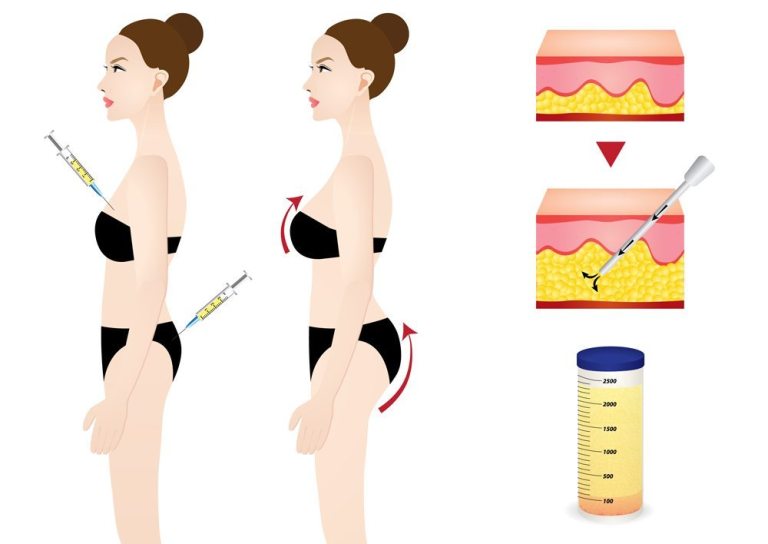Liposuction with fat transfer for hip dips is a game-changer for those seeking body contouring. This procedure not only removes unwanted fat but also enhances your curves, giving you a more balanced silhouette. Many people struggle with hip dips, which can affect their confidence, similar to issues related to breast augmentation, facelift surgery, size, and implant position.
Key Takeaways
-
Liposuction with fat transfer can effectively enhance the appearance of hip dips by redistributing fat to create a smoother silhouette.
-
Ideal candidates are those with realistic expectations and sufficient body fat for transfer; consult with a qualified surgeon to assess your suitability.
-
Understanding the procedure, including safety risks and recovery, is crucial. Be sure to discuss all concerns with your surgeon beforehand.
-
Post-operative care is essential for optimal results; follow your surgeon’s guidelines closely for a smoother healing process.
-
Choose a board-certified surgeon with experience in liposuction and fat transfer to ensure safety and satisfactory outcomes.
-
Remember that results may vary; maintaining a healthy lifestyle can help prolong the benefits of the procedure.
What Are Hip Dips
Definition
Hip dips are the inward curves on the sides of the hips. They occur just below the hip bone. This area can create a noticeable indentation. Many people refer to these curves as prominent hip dips.
Natural Anatomy
Hip dips are a natural part of human anatomy. Everyone has a unique body shape. The prominence of hip dips varies from person to person in photographs, as seen in the original version of clinical procedure results. Some may have exaggerated hip dips, while others have minimal curves.
Influencing Factors
Several factors can influence the appearance of hip dips. Bone structure plays a significant role. Wider or narrower hips in the original version can change how noticeable these curves appear. Muscle mass also affects the shape of the hip dip area. More muscle can fill in these dips, making them less prominent.
Fat distribution is another important factor. People store fat differently based on genetics and lifestyle. Those with more fat in the hip area may have less visible hip dips.
Body Positivity
Understanding hip dips is essential for body positivity. Many people feel self-conscious about their body shapes. Recognizing that hip dips are normal can help improve self-image. Embracing these features is crucial for mental health.
Surgical Options
For those seeking change, there are options available. Hip dips surgery can enhance the hip area. This procedure often involves liposuction with fat transfer. Surgeons remove fat from one part of the body and inject it into the hip dip area. This process aims to create a smoother, fuller appearance.
Recovery Process
Recovery from hip dips surgery varies by individual. Most patients need rest for several weeks post-operation. Following medical advice is important for optimal results.
Patients should also manage their expectations regarding recovery time and outcomes after hip dip surgery, hip dip liposuction, or hip dips surgery.
Consultation Importance
Consulting with a qualified surgeon is vital before undergoing hip dips surgery or any procedure. Surgeons assess individual needs and recommend suitable options. They explain what to expect during and after surgery.
Understanding both risks and benefits helps individuals make informed decisions.
Benefits of Liposuction with Fat Transfer
Smoother Silhouette
Liposuction with fat transfer effectively enhances the hip area. This fat redistribution surgery helps to achieve a smoother, more contoured silhouette, addressing the hip dip. Many people desire a more balanced body shape. The procedure targets the hip dips, creating a fuller appearance in that region.
Fat removal occurs from areas where it is unwanted. Common sites include the abdomen, thighs, or flanks. The surgeon then carefully transfers this fat to the hips. This technique allows for a natural-looking enhancement. Patients often notice a significant change in their body proportions after hip dips surgery.
Dual Benefit
This approach offers a dual benefit. It not only removes excess fat but also adds volume where needed. The fat grafting procedure, often associated with hip dips surgery, utilizes the patient’s own fat cells. This method significantly reduces the risk of complications compared to artificial fillers.
Patients appreciate this aspect of the procedure. Using their own fat, such as for hip dip procedures, minimizes allergic reactions and other side effects. Many find comfort in knowing that their body is using its own material for enhancement.
Natural Results
Fat grafts create natural results that blend seamlessly with existing tissue, similar to hip dips surgery. Surgeons use advanced techniques to ensure proper placement and integration. This careful process leads to long-lasting outcomes. Patients can expect fuller hips without looking overly enhanced.
The success of fat grafting procedures, especially for hip dip corrections, largely depends on the amount of fat that survives after transfer. Not all transferred fat will survive, but most patients see satisfactory results. Surgeons often recommend multiple sessions for optimal results.
Enhanced Body Proportions
Liposuction with fat transfer can improve overall body proportions. Many patients report feeling more confident after the procedure. The change in hip shape can alter how clothes fit and how individuals perceive their bodies.
Leg lifts may also complement this procedure, enhancing muscle tone in the legs and addressing hip dip. Together, these approaches create a balanced figure. Patients often feel empowered by their new look.
Recovery and Care
Recovery from liposuction with fat transfer typically involves some swelling and bruising. Most patients with hip dip can return to normal activities within a few weeks. Following post-operative care instructions is essential for optimal healing.
Surgeons usually advise wearing compression garments during recovery. These garments help reduce swelling and support the newly contoured areas. Proper care aids in achieving the best results possible.
Understanding the Procedure
Liposuction Process
Liposuction is a surgical procedure that removes excess fat from specific areas of the body. Common donor areas include the abdomen, thighs, and flanks. Surgeons make small incisions in these regions. They insert a thin tube called a cannula to suction out fat cells. This method allows for precise fat removal.
The amount of fat removed varies based on individual needs. Patients typically stay awake during this procedure, but anesthesia is used to minimize discomfort. The process usually lasts between one to three hours.
Fat Purification
After harvesting, the next step involves purifying the fat. Surgeons place the extracted fat into a centrifuge. This machine spins rapidly to separate the pure fat from other fluids and damaged cells.
This purification process ensures only healthy fat cells are used for injection. Once purified, the fat is placed in syringes for easy injection into the target area.
Injection Technique
Surgeons inject the purified fat into the hip dip area. This area often appears concave or less full than surrounding regions. By adding fat, surgeons create a fuller and more balanced appearance.
The injection technique requires precision. Surgeons use small needles to deposit tiny amounts of fat at various depths. This method helps achieve a natural look and feel.
Patients can expect some swelling after the injections. However, this subsides within a few weeks as the body adjusts to the new fat deposits.
Clinical Procedure Results
Results vary by patient but generally improve over time. Initial results may appear slightly different than expected due to swelling. As healing progresses, the final look becomes clearer.
Many patients report satisfaction with their new shape after recovery. They often feel more confident in their bodies, especially when wearing fitted clothing.
Ideal Candidates for the Surgery
Nonsmokers Only
Candidates for liposuction with fat transfer should be nonsmokers. Smoking can hinder healing and affect surgical results. It is crucial to maintain good health before undergoing any cosmetic procedures.
Body Weight Considerations
Ideal candidates should be within 30 percent of their ideal body weight. This ensures that the surgery will have the best outcome. Being close to this weight range allows for better fat harvesting and transfer. Those who are significantly overweight may not achieve the desired results.
Skin Elasticity Importance
Good skin elasticity plays a vital role in the success of the surgery. Candidates with firm, elastic skin tend to have better outcomes. Tight skin helps support the new shape after the fat transfer. Patients with loose skin may not see optimal results from the procedure.
Medical History Review
Candidates must have no history of bleeding conditions or severe medical issues. These factors can complicate surgery and recovery. Conditions like hemophilia can lead to excessive bleeding during and after the operation. A thorough medical review is necessary to ensure safety.

Age Factor
Age can also influence candidacy for this plastic surgery. Generally, patients should be at least 18 years old. Younger patients usually have better skin elasticity and overall health. Older individuals may still qualify if they meet other criteria.
Realistic Expectations
Potential candidates should possess realistic expectations about their surgical outcomes. Understanding what liposuction with fat transfer can achieve is essential. Patients should discuss their goals with a qualified surgeon. This conversation helps align expectations with possible results.
Consultation Process
The consultation process is critical for determining candidacy. During this meeting, surgeons assess health, weight, and skin quality. They also discuss previous surgeries or medical conditions that may affect the procedure. Open communication leads to better decisions regarding surgical options.
Surgical Risks Awareness
Awareness of surgical risks is important for all candidates. Like any surgical technique, liposuction carries risks such as infection and scarring. Understanding these risks helps patients make informed choices about their bodies.
Support System
Having a good support system post-surgery enhances recovery. Candidates should consider their ability to rest and heal after the procedure. Family or friends can provide assistance during this time.
Safety and Risks
Common Side Effects
Liposuction with fat transfer can lead to several common side effects. Patients often experience bruising. Swelling is also typical in the areas where the procedure occurred. Pain at the injection site may occur as well. These symptoms usually resolve within a few weeks. However, they can cause discomfort during recovery.
Potential Complications
Complications are rare but can happen. Fat migration is one risk. This occurs when transferred fat moves from the original injection site. Dimpling can also happen, leading to an uneven appearance. Infection is another serious concern, which could require additional treatment. It’s crucial to be aware of these risks before proceeding.
Post-Operative Care
Following post-operative care instructions is vital to minimize risks. Surgeons provide specific guidelines for recovery. These may include avoiding strenuous activities and wearing compression garments. Proper positioning during recovery helps reduce swelling and enhances results. Adhering to these recommendations ensures a smoother healing process.
Disclaimer
Patients should review all information before surgery. Photographs of previous patients can provide insight into expected results. Discussing concerns with a qualified surgeon is essential. They can address individual risks based on medical history and health conditions.
Post-Op Care and Recovery
Pain Management
Managing pain after liposuction with fat transfer is crucial. Patients should follow their surgeon’s instructions on medication. Prescribed pain relievers can help ease discomfort. Cold compresses also reduce swelling and numb the area. Apply these compresses for 20 minutes at a time. This can provide relief in the early days of recovery.
Activity Restrictions
Avoiding strenuous activities is essential during recovery. Heavy lifting or intense workouts can strain the body. Patients should take it easy for at least two weeks post-surgery. Gentle walks are encouraged to promote circulation. However, any activity that causes pain should be avoided. Wearing compression garments offers additional support. These garments help reduce swelling and improve comfort. They should be worn as directed by the surgeon.
Recovery Timeline
Full recovery from liposuction with fat transfer takes time. It may take up to six months to see final results. Initial swelling will decrease within a few weeks, but some may linger longer. Patience is key during this period. Regular follow-up appointments with the surgeon are important. These visits allow for monitoring progress and addressing concerns.
Final Results
The augmentation process aims to enhance body contours effectively. After several months, patients will notice improved hip shape and volume. The results should appear natural and balanced with the rest of the body. Maintaining a healthy lifestyle will help preserve these outcomes long-term.
Emotional Well-being
Recovery isn’t just physical; emotional well-being matters too. Some patients may feel anxious about their appearance during healing. Support from friends, family, or support groups can be beneficial. Sharing experiences with others who have undergone similar procedures can provide comfort. Engaging in light activities that bring joy can also aid in recovery.
Expected Results and Longevity
Initial Results
Results from liposuction with fat transfer may not appear right away. Swelling is common after the procedure. This swelling can obscure the final shape of the hips. Patients often see their initial results within a few weeks. However, it can take up to six months for the full effect to show. During this time, the body heals and adjusts to the changes.
Long-Lasting Effects
Long-lasting results are achievable with proper care. Maintaining a stable weight plays a crucial role in preserving the new shape. Weight fluctuations can affect how the transferred fat settles in the hip area. If weight remains steady, patients often enjoy their results for several years. Some studies suggest that well-maintained fat transfer can last indefinitely with a healthy lifestyle.
Fat Reabsorption
Not all transferred fat survives in its new location. The body may reabsorb some of it over time. Studies indicate that about 30% of transferred fat may not remain permanently. This means some patients might notice changes in their appearance as time passes. Touch-up procedures could be necessary for those who want to maintain their look.
Touch-Up Procedures
Touch-up procedures help enhance or restore volume in the treated areas. These additional sessions are common if significant fat absorption occurs. They can be performed safely after the body has fully healed from the initial surgery. Patients should consult their surgeon to determine if touch-ups are needed.
Emotional Impact
The emotional aspect of seeing results matters too. Many patients feel more confident after their procedure. They often report improved self-esteem and body image. Positive outcomes can lead to increased satisfaction with one’s appearance.
How to Choose a Surgeon
Board Certification
Look for board-certified plastic surgeons. These professionals have completed rigorous training and passed exams. They focus on safety and quality in their work. Certification from recognized boards, like the American Board of Plastic Surgery, indicates a surgeon’s expertise.
Experience matters. Surgeons with extensive experience in fat transfer procedures are preferable. They understand the nuances of the technique. A skilled surgeon can help achieve better results while minimizing risks.
Review Patient Photos
Before-and-after photos provide valuable insights. Review these images to see past patients’ results. This helps set realistic expectations about what you can achieve. Look for consistent results across multiple cases.
Pay attention to how natural the results appear. Well-executed fat transfers should enhance body contours without looking artificial. If possible, ask the surgeon for specific examples relevant to hip dips.
Schedule Consultations
Scheduling consultations is essential. Meeting with different surgeons allows you to discuss your goals. It also gives you a chance to assess their communication style and approach.
During consultations, share your expectations openly. Discuss what you hope to achieve with liposuction and fat transfer. A good surgeon will listen carefully and provide honest feedback.
Ask about potential outcomes based on your body type and condition. Understand that individual results can vary due to several factors, including skin elasticity and fat distribution.
Questions to Consider
Prepare questions before your consultation. Here are some important ones:
-
What is your experience with liposuction and fat transfer?
-
Can you show me before-and-after photos of similar cases?
-
What are the risks associated with this procedure?
-
What is the expected recovery time?
These questions help clarify the surgeon’s expertise and approach.
Evaluate Comfort Level
It’s crucial to feel comfortable with your chosen surgeon. Trust your instincts during consultations. A positive rapport can lead to better communication throughout the process.
Consider how well the surgeon addresses your concerns and questions. Feeling confident in their abilities will ease anxiety about the procedure.
Frequently Asked Questions
Duration
Liposuction with fat transfer for hip dips typically takes about two to four hours. The exact time depends on the amount of fat being removed and transferred.
Patients usually receive anesthesia during the procedure. This can be general or local, based on individual needs and surgeon recommendations.
Recovery Time
Recovery after the procedure varies among patients. Many people return to normal activities within one to two weeks. However, full recovery may take up to six weeks.
During recovery, patients should avoid strenuous activities. This helps minimize swelling and promotes healing. Some discomfort is common but often manageable with prescribed pain relief.
Cost Range
The cost of liposuction with fat transfer can vary widely. On average, it ranges from $4,000 to $10,000. Factors influencing the price include the surgeon’s experience, location, and facility fees.
Financing options are available for patients who need assistance. Many clinics offer payment plans or work with third-party financing companies. It’s important to discuss these options during the consultation.
Fat Transfer vs Implants
Fat transfer and implants serve different purposes in hip augmentation. Fat transfer uses the patient’s own body fat, making it a natural option. It can create a more subtle enhancement.
Implants, on the other hand, involve placing silicone or saline devices in the hips. This method offers a more dramatic change in body size but carries risks like implant rupture.
Fat transfer often results in a more natural look and feel. However, not all patients have enough fat for effective transfer. In such cases, implants may be recommended.
Final Remarks
Liposuction with fat transfer for hip dips offers a transformative solution to enhance your body contours. Understanding the procedure, benefits, and recovery process is crucial for making informed decisions. Knowing the risks and selecting the right surgeon can lead to satisfying results.
If you’re considering this procedure, take the next step. Research qualified surgeons, ask questions, and weigh your options carefully. This journey can boost your confidence and help you achieve the look you desire. Don’t wait—explore your possibilities today!
Frequently Asked Questions
What are hip dips?
Hip dips are inward curves located just below the hip bone. They occur naturally due to the shape of your pelvis and body fat distribution. Many seek cosmetic procedures to enhance their hip contour.
How does liposuction with fat transfer work?
Liposuction removes excess fat from areas like the abdomen or thighs. This fat is then purified and injected into the hip dip area, creating a smoother, more contoured silhouette.
Is liposuction with fat transfer safe?
Yes, when performed by a qualified surgeon, this procedure is generally safe. However, as with any surgery, there are risks involved. It’s essential to discuss these with your surgeon.
How long does recovery take after the procedure?
Most patients can return to light activities within a week. Full recovery may take several weeks, depending on individual healing rates and adherence to post-operative care instructions.
Will the results last?
Results can be long-lasting, but factors such as weight fluctuations and aging can affect them. Maintaining a stable weight helps ensure that your new contours remain intact.
How do I choose the right surgeon for this procedure?
Look for a board-certified plastic surgeon with experience in liposuction and fat transfer. Check reviews, before-and-after photos, and ensure they provide personalized consultations.
Are there any side effects?
Common side effects include swelling, bruising, and discomfort at both the donor and injection sites. Most side effects are temporary and resolve within a few weeks. Always follow your surgeon’s post-op care instructions for best results.





